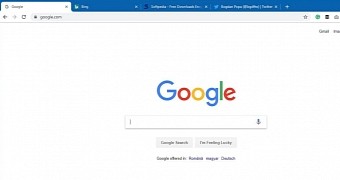In a not so surprising move, Google decided to implement a change in the 69th release of their web browsers that angered a lot of Chrome users.
More precisely, Chrome 69 strips the www. and m. subdomains from the URLs displayed in the address bar.
Thus, if you enter www.google.com and hit Enter, you expect the browser to load the page and display www.google.com in the address bar, but Chrome 69 will instead show you google.com.
Furthermore, the new Chrome release also removes the m. subdomain, traditionally used for web pages specifically designed for mobile browsers.
Although at first, it doesn't seem to be that big of a change and it looks quite harmless, not displaying parts of the URL in the address bar can confuse a lot of users especially considering that www.domain.com and domain.com point to different domains or web servers.
Additionally, if we dig even further, Chrome 69 will not only remove the www. and m. from the starts of URLs, as domains of the form subdomain.www.domain.com will also be displayed as subdomain.domain.com.
You can disable the "URL truncation" feature in Chrome 69 by changing a flag setting
At this point, this change Google made to the way Chrome 69 displays URLs in the address bar seems to be not that well thought over, even though some may say that not all users care about seeing the entire address when browsing a website.
However, there is also the other side of the coin, as some netizens consider that this might be a perfectly calculated move from Google and the first step in hiding its amp. subdomain.
AMP has been designed for pages created with the help of Google's mobile-friendly AMP (Accelerated Mobile Pages) website publishing technology.
If the URL truncation feature is not what you want from your web browser, you can quickly enable the full display of the URL in Google Chrome's address bar by going to chrome://flags/#omnibox-ui-hide-steady-state-url-scheme-and-subdomains and disabling the "Omnibox UI Hide Steady-State URL Scheme and Trivial Subdomains" flag.
In a statement given to Wired, Adrienne Porter Felt, the engineering manager for Chrome, said that "People have a really hard time understanding URLs. They’re hard to read, it’s hard to know which part of them is supposed to be trusted, and in general I don’t think URLs are working as a good way to convey site identity. [..] We want to challenge how URLs should be displayed and question it as we’re figuring out the right way to convey identity."

 14 DAY TRIAL //
14 DAY TRIAL //